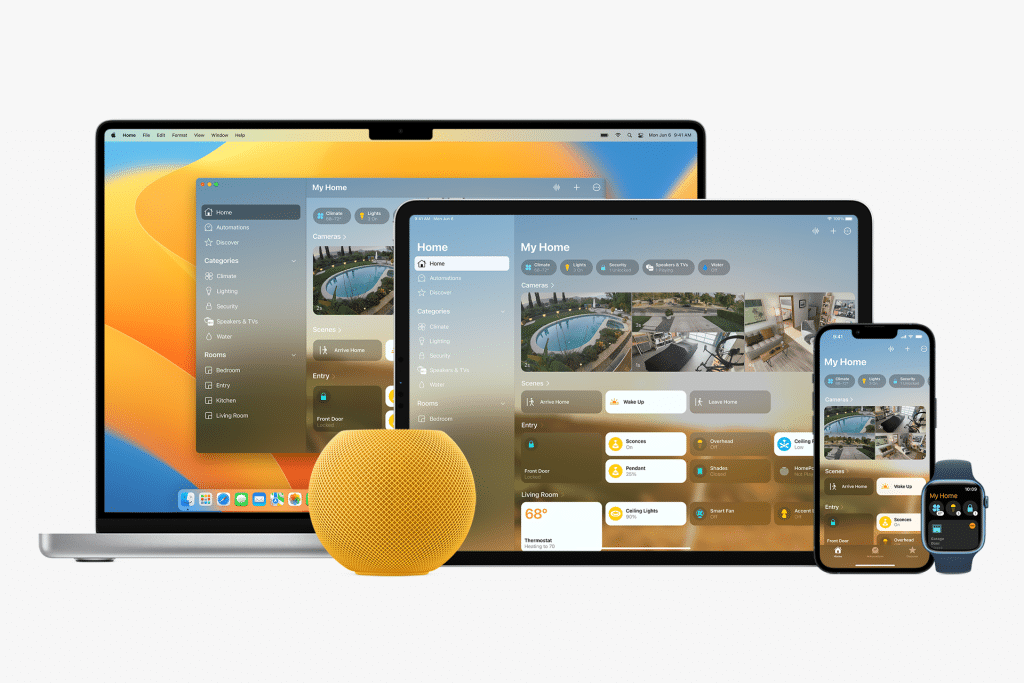New references found within iOS 26.2’s internal code indicate Apple is preparing to introduce a new smart home product, signaling the company’s continued expansion into connected home technology. The findings suggest development of a device that could bridge the capabilities of Apple TV, HomePod, and other HomeKit-enabled accessories under a single platform.
Developers examining the beta release of iOS 26.2 identified multiple references to a device class not associated with any existing Apple hardware. The entries, labeled as part of Apple’s Home Platform framework, include terms pointing to “homeOS,” a software environment first mentioned by Apple engineers several years ago but never publicly released.
Possible Successor to HomePod or Apple TV
While the discovered code does not confirm hardware specifications, references to new audio output and display management features suggest a multifunctional hub capable of media playback and smart home coordination. This aligns with prior reports that Apple has been experimenting with hybrid products combining HomePod-style speakers and Apple TV components.
Such a device would potentially act as a central controller for HomeKit accessories while also functioning as a compact entertainment hub. Apple has previously described its long-term smart home strategy as one focused on privacy, local processing, and seamless integration with iOS devices — elements that could define the product hinted at in iOS 26.2.
Integration With the Apple Home Ecosystem
Apple’s Home app has received consistent updates through iOS 26, emphasizing automation, energy tracking, and improved compatibility with the Matter standard. The appearance of new internal device identifiers in iOS 26.2 supports the idea that Apple plans to anchor those improvements in new hardware.
The potential addition would complement the existing lineup of Apple TV 4K and HomePod mini, both of which already function as Home hubs. Analysts note that a dedicated smart home terminal could extend Apple’s control over local automation processes while maintaining privacy by limiting data transfer to the cloud.
Historical Context and Ongoing Development
Apple’s efforts to strengthen its position in the smart home market have evolved gradually since the introduction of HomeKit in 2014. The company has expanded compatibility with third-party devices while maintaining strict security standards, setting itself apart from more open ecosystems led by Google and Amazon.
The mention of homeOS in Apple’s code first surfaced in 2021 before quietly disappearing from later software builds. Its reappearance in iOS 26.2 suggests renewed development, possibly tied to a broader home-focused initiative within Apple’s Services and Devices teams.
Market observers expect that any new smart home device would debut sometime in 2026, aligning with Apple’s growing push to unify device experiences through shared hardware platforms. Apple has not commented on the discovery or confirmed any upcoming product plans.
